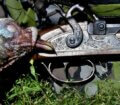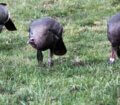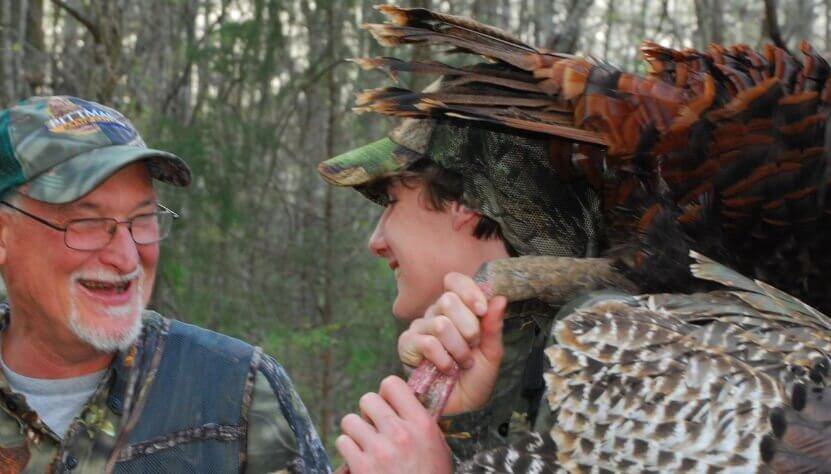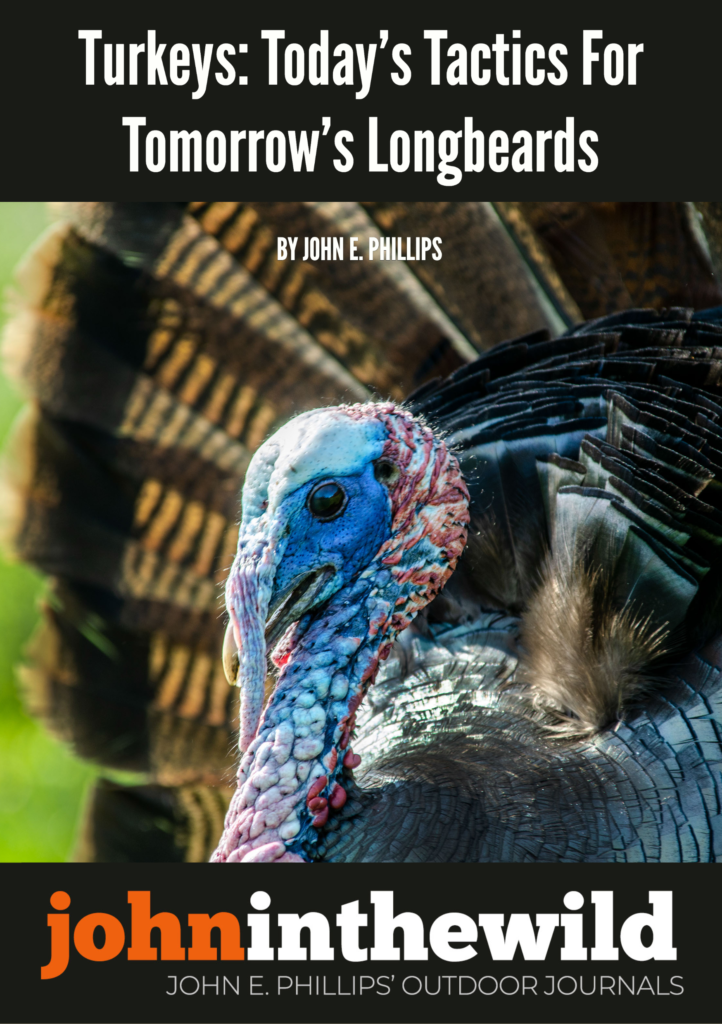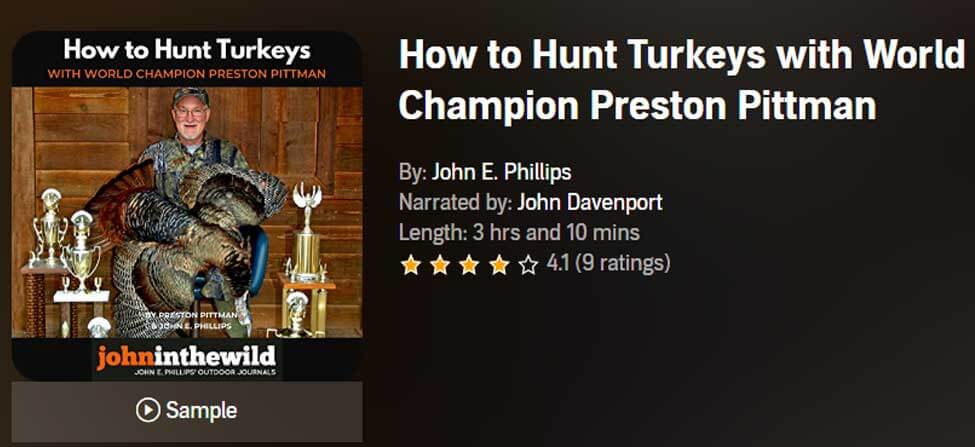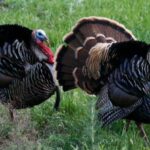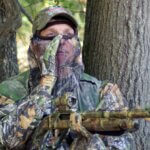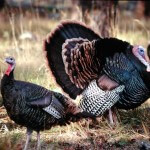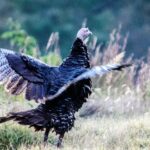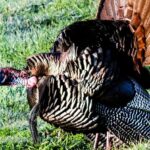John E. Phillips’ Note: When I go after a turkey, the war begins. If I don’t have to swim a creek, crawl through fresh cow manure, run through briars, climb trees, jump barbed-wire fences or slide down mountains, then I have had an easy day afield chasing turkeys. Like other aggressive turkey hunters who are scrappy and adventurous, I decide before ever leaving my home that whatever I have to do that’s legal and moral, I’ll do that day to take a tom turkey.
Aggressive hunting is not just chasing turkeys, outflanking turkeys, calling loud and long to turkeys or continuing to hunt after all hope seems gone. Going to war with turkeys is a state of mind that dictates that no matter what happens during the day, you will endure and battle fiercely, until you take your tom, or you have to be physically drug back to camp because you’re exhausted. Through the years, I’ve been fortunate enough to hunt with some of the most-enterprising war lords of the turkey-hunting fraternity who have taught me the value of being aggressive when hunting turkeys.

Preston Pittman, the creator of Preston Pittman Game Calls in Lucedale, Mississippi, and winner of numerous turkey-calling contests, looks like a turkey, talks like a turkey and walks like a turkey. One spring, Pittman even convinced two gobblers he was a turkey when we hunted Osceola gobblers together in Florida. I just had downed a fine longbeard and started to get-up to retrieve my trophy when I felt a hand on my arm. Pittman motioned for me to sit still and be quiet. The sound of my shotgun was still echoing through the palmettos when Pittman immediately began to cut and cackle aggressively.
“Turkeys usually can’t seem to tell the difference between a shotgun blast and thunder,” Pittman quietly explained. “Maybe if another gobbler is nearby, I can take a turkey from this same spot.”
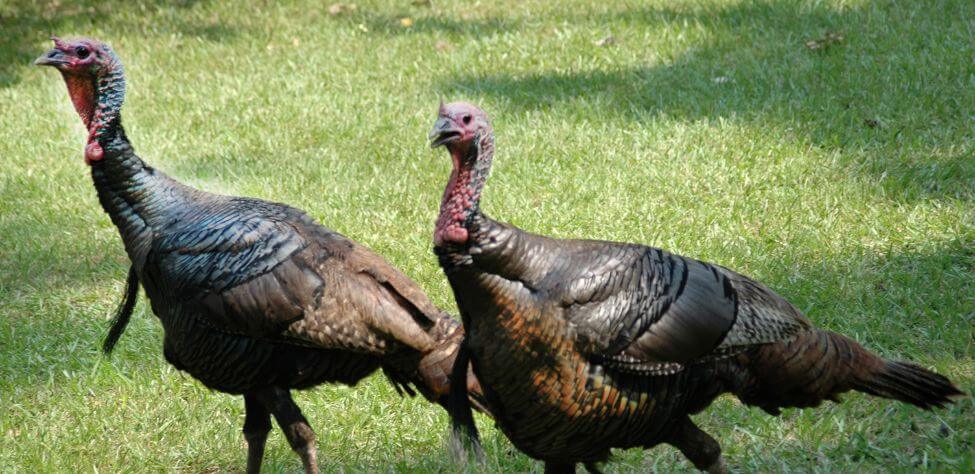
Every two minutes Pittman tried to solicit gobbles with very-aggressive cutting and cackling. After three sets of loud calls, a turkey finally gobbled. A small patch of flooded timber stood between us and the tom. We hung my turkey in a tree to keep predators from getting to him and raced to the end of the water. Pittman called to the turkey once more. The bird came within 40 yards before turning and walking back in the direction from where he’d come.
“I’m going after the gobbler,” Pittman told me. “You stay put.”
We were hunting in a burnt-pine plantation with no cover to hide Pittman’s movements. I thought Pittman’s attempts to take this tom probably would be futile. But since we were hunting on a private ranch, I knew Pittman could try to move on the bird and not present a target for other hunters or himself.
Forty-five minutes passed before I heard Pittman’s shotgun report. I quickly ran around the flooded timber and arrived at the burnt-pine plantation. Sixty yards from me, Pittman held up his fat Osceola with 1-1/4 inch spurs and a 10-inch beard. I saw no place where Pittman could have hidden. How had Pittman gotten within shooting range of the gobbler?
“All I did was get the turkeys to accept me,” Pittman replied. “The gobbler you saw was the boss gobbler. He had a subordinate gobbler with him and a harem of about six hens. When I spotted the turkeys, the two male birds were fighting. The rest of the turkeys in the flock were watching the fight. So, I got down on my hands and knees and crawled slowly toward the birds.
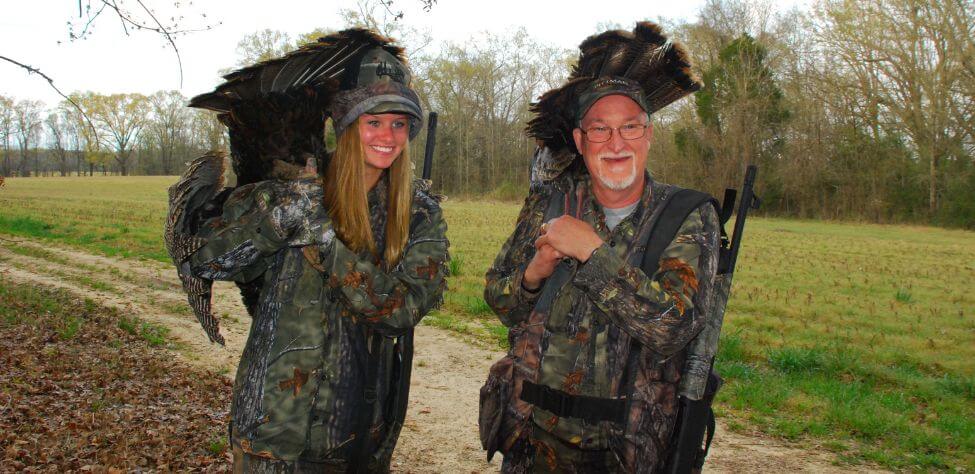
“As long as you move very slowly and don’t seem to pose a threat to turkeys, often they will accept you. They don’t know what you are because you’re moving on what appears to be four legs. They even may mistake you for a yearling calf.
“While I crawled, the dominant gobbler defeated the young gobbler and ran him away from the flock straight to me. When the subordinate gobbler came close to me and raised his head to look back at the older tom, I sat back on my feet, brought my 3-inch magnum to my shoulder and took the shot. Crawling on turkeys that are looking at you is a pushy tactic that often will spook the birds. But sometimes you’ll get lucky – like I did today.”
Tomorrow: Brad Harris Hunts Turkeys Hard
John’s latest print book was published last week: “Turkeys: Today’s Tactics for Tomorrow’s Longbeards,” and the Audible version should be available April 1. In his book that includes John’s time-tested ways to take turkeys from his 50+ years of hunting them, he mentions that the two ways to learn how to turkey hunt both work. You can learn all about turkey hunting by yourself through trial and error, which is the slowest way to learn to turkey hunt and means you’ll make the most mistakes. Or, you can hunt with the best turkey hunters anyone knows and learn from them what they do, why they do it, when they do what, and what not to do.
Expert Guidebooks on Turkey Hunting: Best Sellers
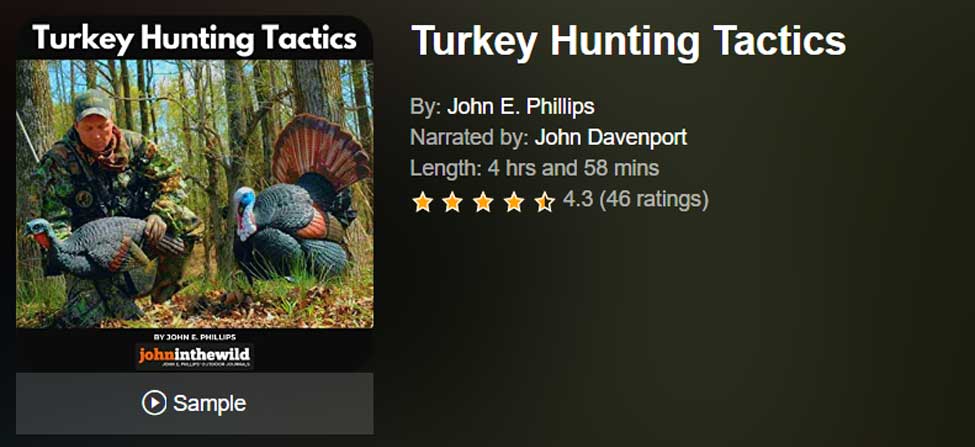
Turkey Hunting Tactics
This turkey hunting audiobook has entertaining chapters like: “How to Miss a Turkey”, “Hunting with a Guide”, and “The Turkey and the New York Lady”.
You’ll learn about all the subspecies of turkey across North America, how to use a turkey call, how to scout before turkey season, how to find a turkey to hunt, and what hunting gear you’ll need to put the odds in your favor to take a wily gobbler.
VERSIONS: AUDIBLE, KINDLE & PRINT
How to Hunt Turkeys with World Champion Preston Pittman
You easily can take a turkey if you don’t make any mistakes, but you have to know what the deadly sins of turkey hunting are to keep you from making those mistakes. If you understand how to hunt a turkey, you’re far more likely to take a gobbler than if you just know how to call a turkey.
Of course, calling is important, and if you want to learn to call a turkey, Preston Pittman will teach you how to call turkeys with box calls, friction calls, diaphragm calls, and other turkey sounds.
You’ll also learn why Preston Pittman once put turkey manure all over his body to kill a tough tom.
When you have turkeys that strut and drum in the middle of a field, when you know there’s no way to get close enough to get a shot, Pittman will show you some weird tactics that have worked for him to help you hunt tough ole toms.
But the main thing you’ll learn in this book is how to become the turkey.
Using what he’s learned while hunting wild turkeys, he’s also become a master woodsman who can take most game, regardless of where he hunts. To learn more secrets about how to be a turkey hunter from one of the world champions of the sport, this turkey-hunting book with Preston Pittman is a must.
VERSIONS: AUDIBLE, KINDLE & PRINT
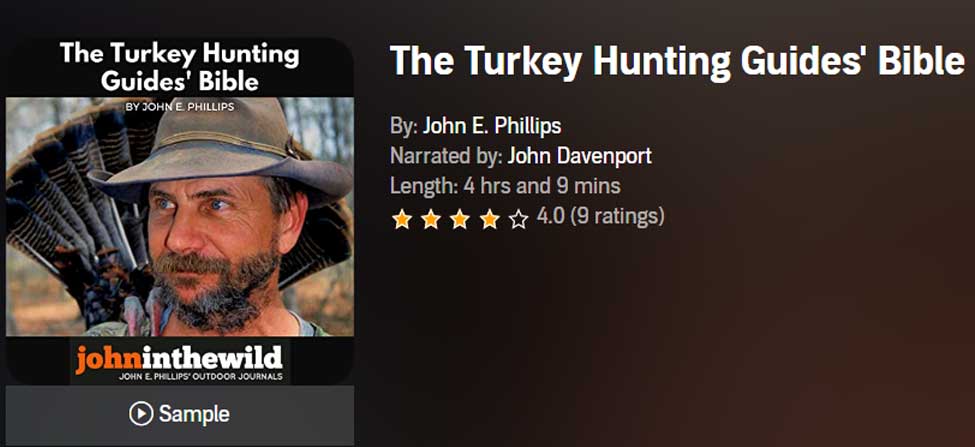
The Turkey Hunting Guides’ Bible
The quickest way to learn how to turkey hunt successfully is to either hunt with a turkey hunter with years of experience or a turkey-hunting guide. These two types of turkey hunters have solved most of the problems turkey hunters ever will face.
Just as one size of shoes won’t fit every person, one style of turkey hunting doesn’t fit each hunter. Each turkey-hunting guide interviewed for this book has his own style of calling, hunting, and outsmarting turkeys.
While listening to this book, make a list of the new information you’ve learned, take that list with you during turkey season, and try some of the new tactics. Then you’ll become a more versatile turkey hunter and prove the wisdom from The Turkey Hunting Guides’ Bible.
VERSIONS: AUDIBLE, KINDLE & PRINT
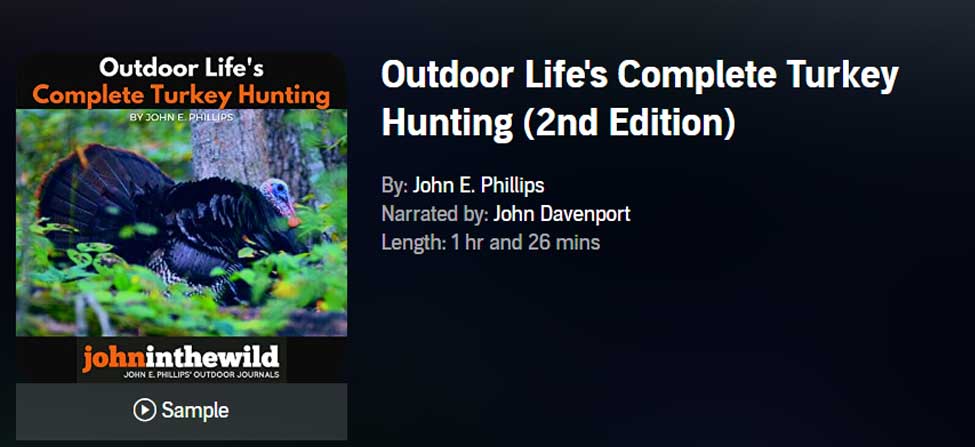
Outdoor Life’s Complete Turkey Hunting (2nd Edition)
This Audible book will help you learn how to call turkeys with two of the nation’s best, longtime and well-known turkey callers, Rob Keck, formerly with the National Wild Turkey Federation, and Lovett Williams, a wildlife biologist who recorded wild turkeys giving the calls that you’ll learn how to make on various types of turkey callers.
VERSIONS: AUDIBLE & KINDLE

